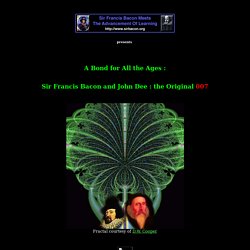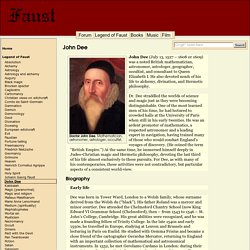

THE NEW ATLANTIS: Master Plan Of The Ages. Cosmic Convergence Research Group The Hidden Connections between the Elizabethan Court led by Sir Francis Bacon, the Founding Fathers of the American Republic guided by Comte de Saint Germain, and the Kremlin Leaders Assembled by Russian President Vladimir Putin This is a story which spans the entirety of the 6000 yearlong Kali Yuga.
Also known as the Age of Quarrel, which began with the Mayan Long Count Calendar in approximately 3113 B.C.E., the Kali Yuga is analogous to the present Iron Age. The true history of the current era, which is defined by so many epic wars and longstanding conflicts, is not only very protracted and extremely complex, many of the most important events and personages lie deeply hidden in its murky past. There are several significant threads interwoven throughout this multi-millennial saga which graphically portray our current Age of Conflict. Queen Elizabeth. Reassembling the Lost Library of a 16th-Century Magician Who Spoke to Angels. Fold-up geometrical illustrations in the first English edition of Euclid’s ‘Elements of Geometry,’ published London, 1570.

John Dee wrote a mathematical preface to the book. (© Royal College of Physicians) The 16th-century John Dee was a magician in the court of Elizabeth I, a man who had conversations with angels, an astrologer once imprisoned for predicting Queen Mary Tudor’s death through her horoscope, and a spy. He signed his coded name as 007, a sign-off which later inspired Ian Fleming’s character James Bond. Despite this litany of lore, much of the real life of John Dee remains a mystery, one which researchers are helping to unravel with the reassembly of his library.
A rotating paper volvelle used as a cipher disc in Johannes Trithemius’ cryptographic book ‘Polygraphy,’ published Paris, 1561. First glimpse of lost library of Elizabethan polymath John Dee. Where to start with the legend and life of Dr Dee?

Born on 13 July 1527, John Dee became one of the greatest scholars of the age, and a philosopher and courtier to Queen Elizabeth I. A polymath, he was a proto-modern scientist, a friend of Tycho Brahe, with interests in rational thought, as well as magic. He was a skilled astronomer but also an astrologer; a mathematician but also an alchemist. He put a hex on the Spanish armada, which is supposedly what caused the bad weather and the English victory.
Shakespeare is said to have based both King Lear and Prospero on him. Advertisement. Francis Bacon & John Dee. By D.W.Cooper & Lawrence Gerald There has been more written about Francis Bacon's life from the age of sixteen, when he left England and travelled to the continent during the late 1570's meeting up with the leading thinkers of the cultural revolution in France, than his other formative years and the elders who also shaped his mind.

Alfred Dodd in his book Francis Bacon's Personal Life -Story quotes Bacon's biographer and chaplain, Dr.Rawley, "I shall not tread too near upon the heels of truth", letting us know that this biography of Bacon would not be too exact in it's details. Dodd's book speculates that Queen Elizabeth secretly supervised the education of young Francis. There are only brief accounts of his early days at York House and Gorhambury with his adoptive parents Sir Nicholas and Lady Anne Bacon. The Earl of Leicester, Robert Dudley (the Queen's favorite), was the first man, according to Dodd to license a band of players for dramatic purposes. Dr. Manly P. Mrs.
John Dee. Doctor John Dee.

Mathematician, astronomer, astrologer, occultist. John Dee. John Dee (13 July 1527 – 1608 or 1609) was a mathematician, astronomer, astrologer, occultist, imperialist[5] and adviser to Queen Elizabeth I.

He devoted much of his life to the study of alchemy, divination and Hermetic philosophy. In his lifetime Dee amassed one of the largest libraries in England. His high status as a scholar also allowed him to play a role in Elizabethan politics. He served as an occasional adviser and tutor to Elizabeth I and nurtured relationships with her ministers Francis Walsingham and William Cecil. Dee also tutored and enjoyed patronage relationships with Sir Philip Sidney, his uncle Robert Dudley, 1st Earl of Leicester, and Edward Dyer. Biography[edit] Early life[edit] Later life[edit] By the early 1580s, Dee was growing dissatisfied with his progress in learning the secrets of nature and with his own lack of influence and recognition. Final years[edit] Personal life[edit] Dee was married three times and had eight children. Achievements[edit] Thought[edit]